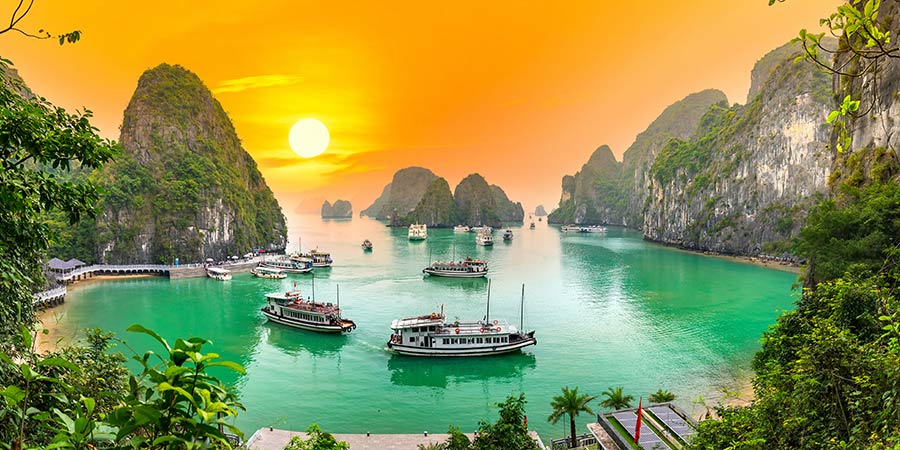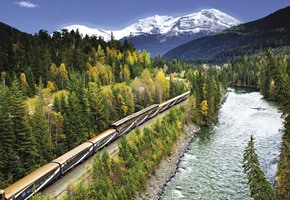Vietnam & Cambodia. Customers often think that these two countries are similar, and that's why they are included in the same tour. Two adjacent countries in southeast Asia, so they must be pretty much the same, right? The truth is that they are as different as can be, as our Grand Tour of Vietnam & Cambodia demonstrates.
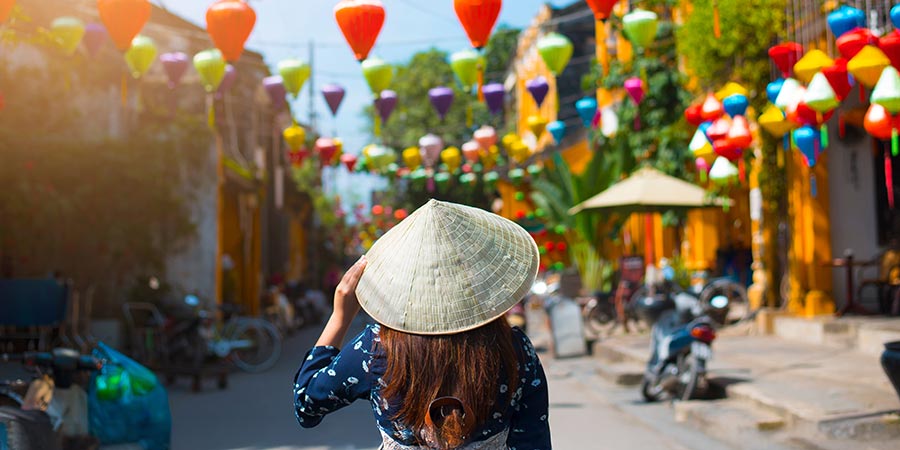
More Different Than You Think
Vietnam (pop. 101 million) is one of the five Tiger Cub economies (together with Indonesia, Malaysia, the Philippines and Thailand since you ask). It's also a Communist state with a mixed economy (i.e. private business is encouraged) and most Vietnamese people do not follow any particular religion other than traditional folk beliefs. Cambodia (pop. 17 million) is a monarchy, largely Buddhist and with a capitalist economy.
I love visiting both countries, but for different reasons, and in different ways.
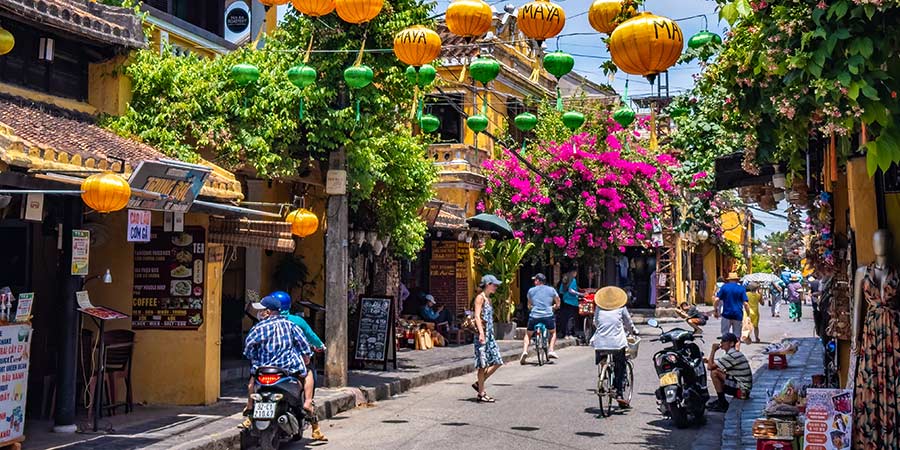
The Cities of Vietnam
Vietnam has an energy that is exhilarating. Almost every house seems to have a small business or shop on the ground floor. The streets are bustling with activity and pedestrians and the tidal flow of motor scooters at every street intersection is urban choreography on an epic scale. The country has more than 45 million motor scooters, and almost 86% of the population owns at least one.
Everything you can think of is for sale somewhere. Thanks to the French colonial heritage, there is an extensive network of coffee shops, bakeries and exquisite patisseries. The Vietnamese take their coffee strong and sweet and usually seated on the pavement on small plastic garden furniture. Many Vietnamese women choose to wear their national dress, the beautiful áo dài.
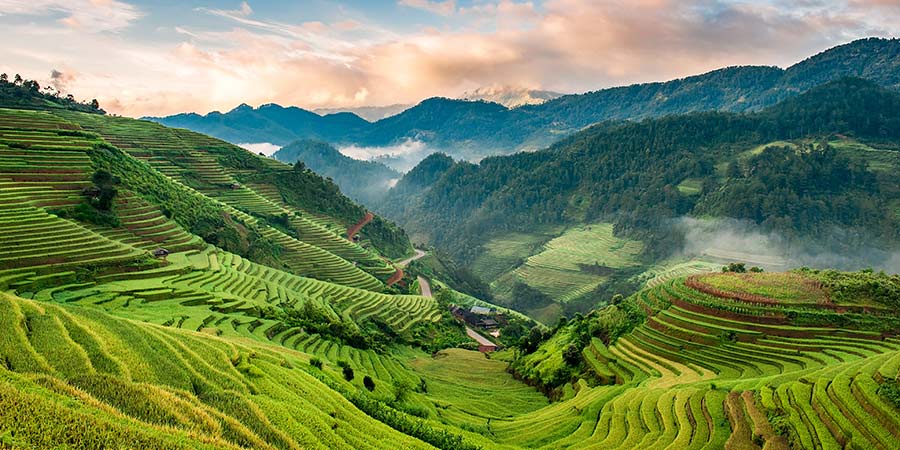
Timeless Beauty in the Vietnam Countryside
And then, suddenly… you're out in the countryside and it's all different again. Paddy fields, water buffalo, conical hats (known as nón lá). There's a timeless feeling. The same families have been working these fields for generations. The difference is that now they work for themselves rather than a colonial government, but the image stays the same. A line of workers harvesting the rice in the drizzle of a morning shower or a stoic water buffalo pulling through mud.
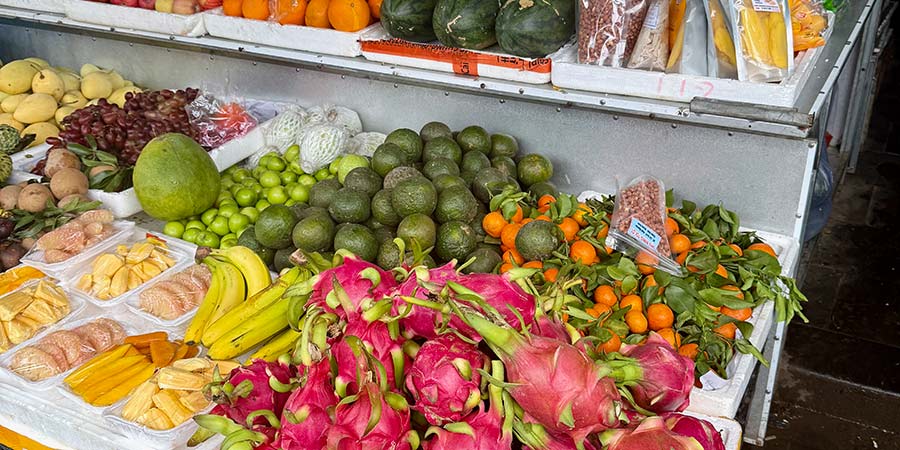
Vietnam's Diverse Climate and Agriculture
Vietnam is very long (1,500 miles) and very thin (31 miles at its narrowest point) and this means that the climate varies hugely in winter. It's not uncommon to need a coat and sweater in Ha Noi and Ha Long Bay but by the time you get to Ho Chi Minh City (Sai Gon) it's 30℃ in the shade and tropical humidity.
In the north they get one rice crop a year - in the south they can get three. The country is essentially two massive river deltas with mountains in between. In the north, the Red River runs from China, through Ha Noi and into the Gulf of Tonkin. In the south, the Mekong River feeds a delta area near Sai Gon) that is ideal for agriculture - you can grow anything there. In the mountains they grow coffee and cocoa.
Did you know that Vietnam is the second biggest coffee producer in the world? They produce Robusta coffee beans that are largely made into instant coffee, so buying ground Vietnamese coffee in Europe is not easy.
And the fruit; the fruit is amazing! Smaller than ours, but the flavours are far more intense. Tiny, sweet bananas bursting with flavour. Satsumas, dragonfruit, jackfruit, pineapple, rambutan, longan (dragon eye), passionfruit, mango, guava and pomelo. You'll never need dessert in Vietnam when these are available after dinner for sweetness.
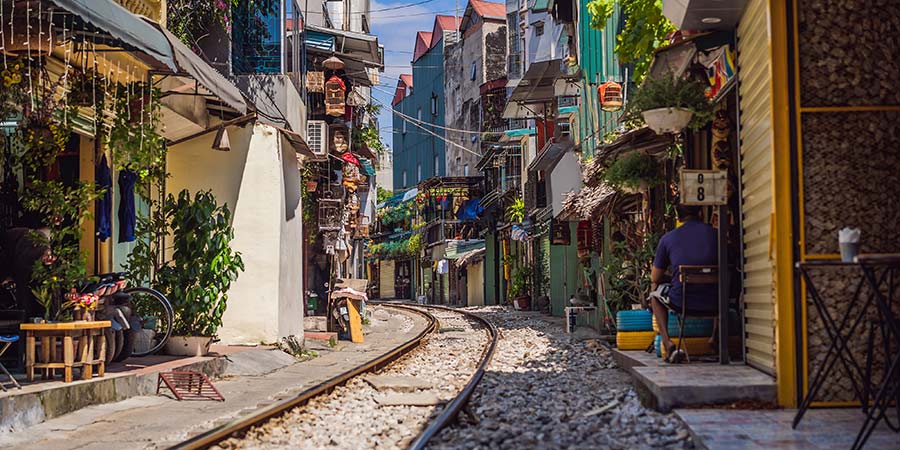
Travelling by Rail on the Reunification Express
We travel the length of the country by rail on the Reunification Express, 1,726kms of rusted tracks and squealing wheels and the generic name for all north-south trains running between Ha Noi and Sai Gon.
You need a sense of adventure to ride these trains since the rolling stock is not exactly cutting-edge luxury. The seats are leather and there is air-conditioning but this is functional rail travel rather than the more glamorous long-distance trains that we are more used to.
Other tour companies move clients around the country by air, but I think it's a great inclusion.
From the train you get a real feel for the size, geography and natural beauty of the country and, in the process, begin to understand it far more. You just have to accept that you need to wear your adventure pants for this journey, rather than your ballgown… and whatever you do, don't miss 'Train Street' in Ha Noi.
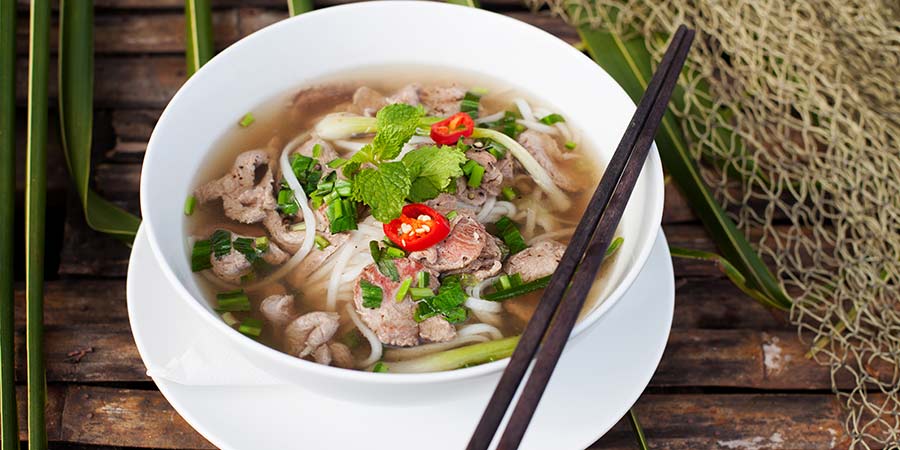
The Vietnamese Language: A Unique Challenge
By the way, before we move on to Cambodia… The Vietnamese language is monosyllabic. There are no words with more than one syllable. The longest word in the Vietnamese language has one syllable and seven letters. So, I'm not being a know all - It really is Ha Noi and Sai Gon.
It's also a tonal language. Each syllable can carry one of six tones, which can alter the meaning of a word completely. Go to a restaurant and order "Phở", the globally loved Vietnamese soup and noodle dish. Pronounce it as "Fur" and you'll get what you expect. Pronounce it as "Foe" and you've just ordered something completely different which may rather shock your waiter..!
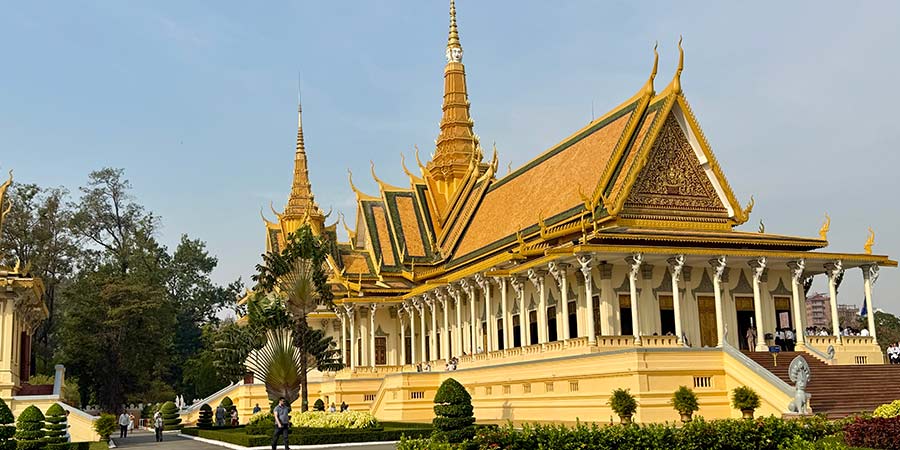
Phnom Penh: A City of Contrasts
And so… to Cambodia. Khmer (Cambodian) people are quiet, patient, charming and warm which is all the more remarkable given their recent tragic past. Cambodia was historically part of French Indochina, along with Vietnam and Laos. They have long been a football kicked around in border disputes with their more powerful neighbours.
Phnom Penh is bustling, hot and inexpensive (for foreigners) but there is an underlying sadness that I sense every time. Maybe it's just me being attuned to it? There are skyscrapers, but not all are finished in construction and some never will be. Chinese, Thai, Japanese and Vietnamese money is slowly moving into the country but the Khmer are wary of the attached strings, and they have good reason to be so. Corruption can be an issue, in both Cambodia and Vietnam.
The Royal Palace in Phnom Penh is beautiful and I never tire of visiting. The leaves of fan-shaped palm trees rotate slowly during the day to follow the sun, and the gardens are lovingly maintained. The Khmer people are fond of their royal family, although, as always in this fascinating country, the historical relationship is complicated.
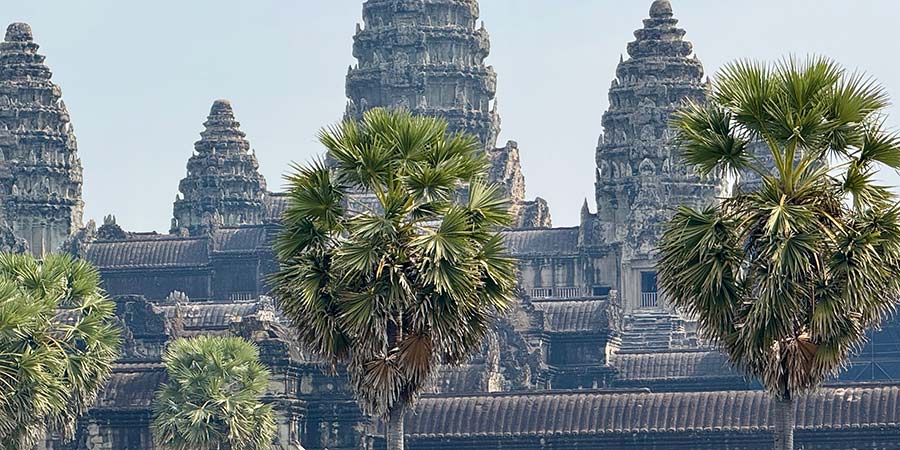
The Heart of Cambodia's Heritage at Angkor Wat
There is also, of course, the ancient Hindu-Buddhist temple complex at Angkor Wat within the ancient Khmer capital city of Angkor, originally constructed in 1150 AD. It is considered as the largest religious structure in the world by Guinness World Records.
We spend two nights in nearby Siem Reap, staying at the beautiful Angkor Miracle Resort & Spa. It's sometimes an effort for clients to get out of the pool and visit the temples, but they all agree it is worth it every time. I've visited the site many times and have tried to understand what it is about the place that is so striking.
I believe it is the jungle context. Your first sight of Angkor Wat is of the towers rising in the distance through a canopy of trees, and then later framed through an access track of jungle leaves. We visit the site in a convoy of tuk tuks which makes it easy to stop for photos - It's also more fun and cooler. You could spend a lifetime exploring here. Some people do.
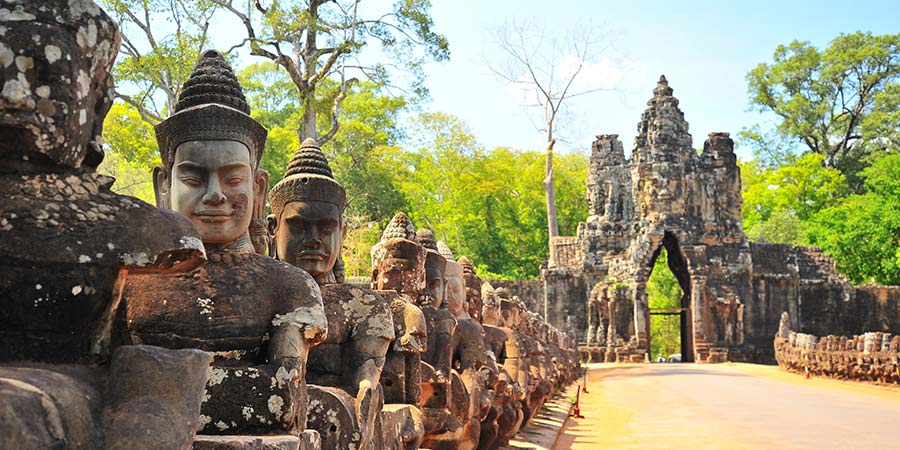
Exploring More Temples
We also visit the temple at Angkor Thom, looking like a massive Jenga game with faces carved on the entrance gate towers and carved Gods and animals at every turn. You can climb the central steep steps up to the Bakan Sanctuary should you wish.
And finally, the temple at Ta Prohm, where with infinite slowness, the jungle is reclaiming the work of man. The temple was built without mortar and, after it was abandoned, trees took root in the loosened stones. This is my favourite place. Roots and branches everywhere that complement the stonework in a strange way.
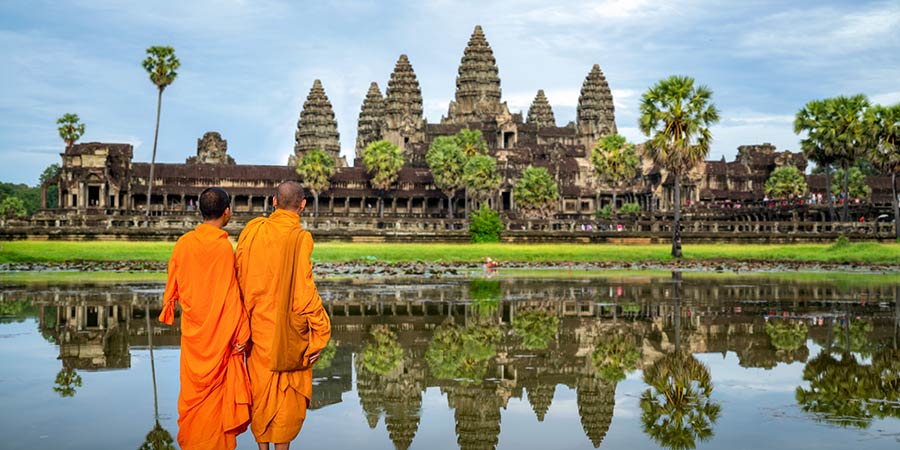
Why This Tour Is Exceptional
So, what is it about this tour that makes it so exceptional? I think it's the range of experience that it offers. The climate varies throughout, so does the architecture and scenery, not to mention society, people, and the urban versus rural contrasts.
When you add that to the sheer thrill of southeast Asian life, bustling along at either the speed of light or a timeless more leisurely pace you have a heady mixture. I will never tire of taking this tour.
Experience the Grand Tour of Vietnam and Cambodia for yourself and join us on this unforgettable journey.

